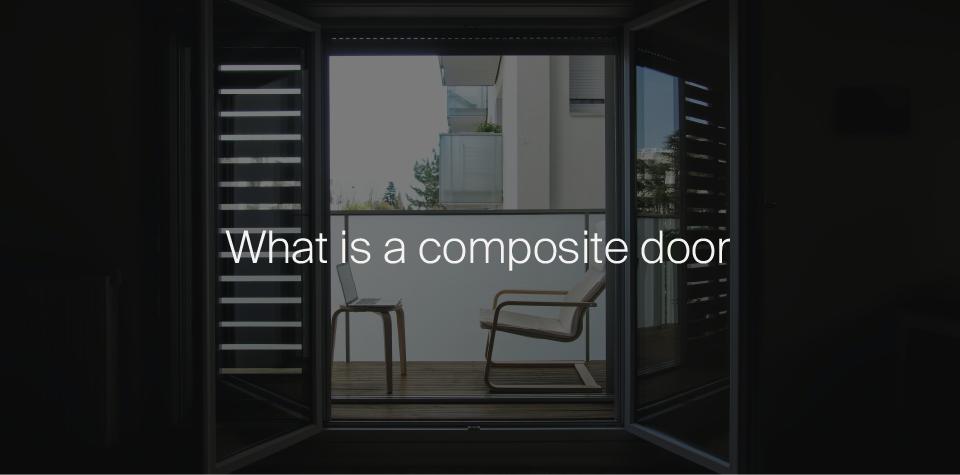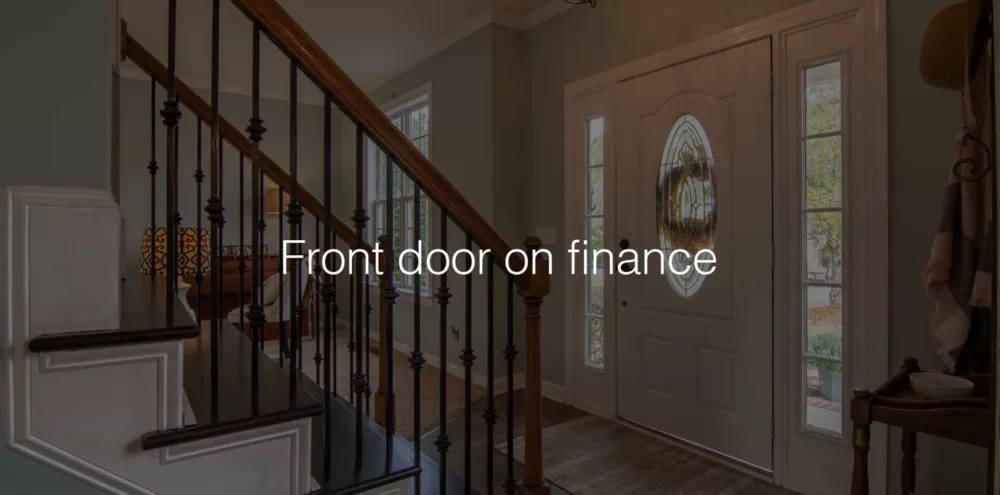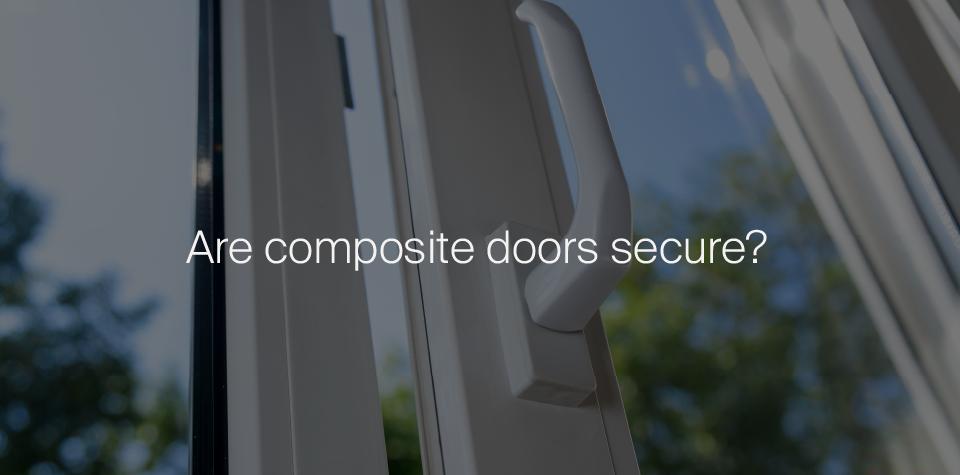What Is A Composite Door?
Composite doors are not only highly durable, but they are also cost-effective alternatives to traditional doors or other wooden door materials. Before composite doors, people would have needed to compromise on the quality or style of their front doors.
Let's take a look at what composite doors are and what makes composite doors so popular for a property (commercial or residential), other than the fact that composite doors are twice as thick as uPVC doors.
Design and order online using our door builder, with finance at checkout, including 0% interest-free door finance with instant online approvals:
What Is A Composite Front Door?
Composite doors look and function just like wooden doors. Basically, they should look like a traditional timber door. A good composite door should resemble natural wooden doors and be made with only the highest quality materials available.
They also come in a range of designs to suit your needs, and you can choose from different door materials, colours, creative patterns, images and lettering.
There are a lot of differences between traditional wooden doors and hybrid or composite ones. A composite door in the front of your home can give off a modern and refreshing feel if you keep up with the little maintenance a composite door requires.
Another notable difference is what a composite door is made out of.
What Is A Composite Door Made Of?
A composite door has superior strength and a sturdy wooden core that you'll be able to rely on for years. A composite door is made with multiple materials under high pressure, and the core is made from CFC-free polyurethane.
During manufacturing, composite front doors are made by laminating layers of high-quality timber, which prevents warping or bowing over time and this series of different layers gives them more strength which is placed over the solid timber core.
A composite door also has GRP glass-reinforced plastic that is more economical and durable for increased insulation and the outer layer has a wood grain that makes it attractive, making it appear like a wooden door. On top of this, there is also increased security as it's virtually invulnerable to forced entry.
What Colours Do Our Composite Doors Come In?
A composite door comes in a wide range of colours. Let's take a look at the options:
- French Grey
- Silver grey composite doors
- Foiled White
- Anthracite Grey
- Golden Oak
- Schwarzbraun
- Rosewood
- Cream
- Agate Grey
- Chartwell Green
- Irish Oak
- Duck Egg Blue
- White
- Black
- Blue
- Green
- Red
Take a look at our colour options to see all the colours we have available.
Composite door vs wood door
A composite door won't rot, change colour over time or warp like doors that are made entirely from wood. Although new composite fronts doors and frames can expensive, they require less maintenance and greater durability. That's what makes composite wood doors worth it when compared to entirely wooden doors.
Composite door vs uPVC doors
A composite door is made from a variety of different materials (done under high pressure), whereas a uPVC door is made from an insulated frame sealed in plastic. How composite doors are made is a big factor in why they offer a lot more security and protection advantages that uPVC doors don't.
The Benefits Of A Composite Door
A composite door can provide many benefits, making them more expensive than other doors.
The term "premium" usually comes with a price.
Items such as furniture made of a combination of different door materials will incur higher costs to build; this is to be expected from any product in the building trade that is designed to be of high quality - and the same goes for composite doors.
Secure Door
A new composite front door can provide maximum security, making you and your family feel more secure.
High-quality composite doors are made of high-quality materials that provide many benefits that a single-material uPVC door or timber doors can't offer, such as improved sound reduction, security and heat insulation.
Builders, architects, and do-it-yourself enthusiasts all love the custom-made front doors with their laminated uPVC and timber layers.
These reinforced doors provide a barrier to anyone who might try to break them down.
The purpose of any outside door - back or front doors - is to separate the outside world from your home, and if you don't have one that is secure, why do you even have it?
Composite doors have laminated glass-reinforced plastic fittings, which make them shatterproof. Laminated glass has two panes of glass with a thin layer of PVB (Polyvinyl Butyral) in between to keep it intact even when broken.
When you invest in a composite door, you're getting an incredibly tough lock mechanism with locks that are resistant to all sorts of tampering methods, such as snapping or drilling.
Depending on the style of the door's cylinder or lock body employed, some mechanisms use magnetic pins that require a magnet to be cracked.
They're easy to maintain
Wooden doors may need to be treated with a sun protection sealant or liquid pigment to prevent the colour from fading when exposed to hot, sunny days. You don't need to worry about composite doors, though.
When they're not in use, you can simply clean them with an occasional damp cloth wipe, and they'll stay strong and dependable.
If your front door is damaged, you can repair a cracked composite door with some paint or filler, making it look brand-new again.
Composite doors have excellent longevity, lasting decades, so you can maintain a brand-new look for your home for as long as possible.
Thanks to the durable uPVC frame, you won't need to worry about painting or treating a wooden door every few years. Composite doors will look as good as new with a small amount of effort.
Thermally efficient (heat retention)
A single-layer door is typically made of uPVC or timber, and although you get a lot of light with this type of door, it can be really cold.
Using a composite door to increase insulation in your home will help keep it warm during the cold winter months. The warm, foam core interior and the laminated glass both have amazing properties that retain heat, making energy efficient composite doors perfect for a thermally-efficient home.
The high thermal efficiency present in composite doors makes also means you can save money on your heating and electricity bills, as you won't require to use as much energy with all of the heat that is retained.
Composite doors last a long time
As opposed to doors made of wood, which are subject to wear and tear due to weather exposure, composite doors are designed and built to be weather resistant, with a very sturdy structure. This means the door will last you for years without losing its shape.
Easy to change
When it comes to colours, you can choose any type of paint, so long as it's oil-based. Latex-based paints do not provide the same coverage as oil-based paints, so they might not be a good choice for your composite door colour. The best way to get optimal coverage is by applying two layers of paint. Have sandpaper handy if you need to file down any areas that are uneven.
As you can see, it's easy to make the door look like a new composite door again with a simple paint job. You can also easily match your composite front door to the style of your home with all the colours to choose from. It's also good to note that there are many different types of glass design options if you want to let some light in.
FAQs
Are composite doors the same as uPVC doors?
No, uPVC doors have the same plastic as composite doors but without sturdy frames. This means that they lack the insulation and security that composite front doors offer. uPVC doors are easy to break into as they are usually around 28 mm thick, compared to a composite door which is usually around 44 mm thick.
Do composite doors fade?
A composite door does not fade, even with direct exposure to the sun or other weather elements.
How much does a composite door weigh?
This will depend on the size of the composite door. A typical composite door might weigh around 30 kg, without the heavy glass or fittings.
How thick are composite doors?
A composite door usually comes in 35 mm, 44 mm and 65 mm thicknesses. A composite door can be manufactured to any thickness you desire.
What does a composite door cost?
This depends on the style, colour, level of security, and size. Remember, a composite door is the premium alternative to uPVC doors. You can take a look at the latest composite door costs on UK Composite Doors.
How are composite doors made?
Composite doors are made from a range of materials, including uPVC, timber, GRP & insulating foam, which allows the door to be highly secure. This is just one of the many benefits of composite doors that are due to the strong materials they are made of.
What Are Composite Doors - In Conclusion
Now that you've read our guide, you should know more about a what a composite door is and what a composite door is made of.
Composite doors are low maintenance and come in a variety of styles. You can customise them to fit your specific needs, making them much more personal than a wooden or uPVC door.
You might think you need the charm of a wooden door, but a new composite door is designed to offer all the wholesome appeal of a door made of wood without any of the drawbacks.
Composite doors are the perfect door for people who want security and energy efficiency while making the front door attractive. A more attractive property means a better resale value. Want some more tips and ideas? Check out the UK Composite Doors blog.



